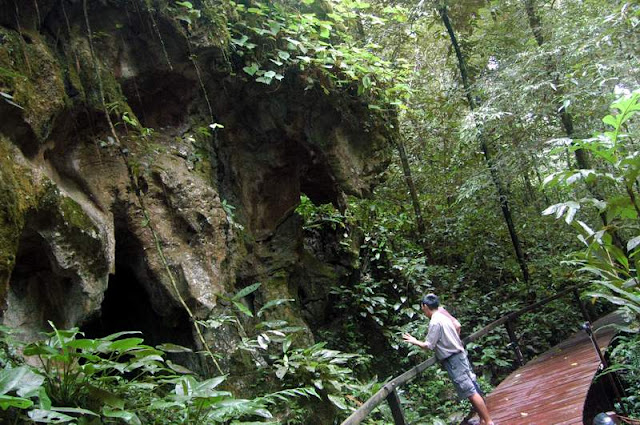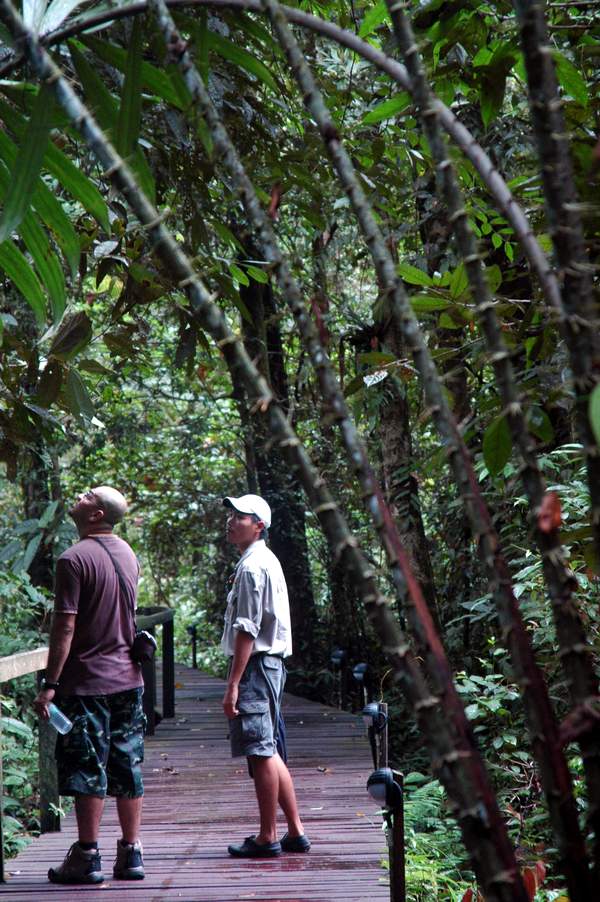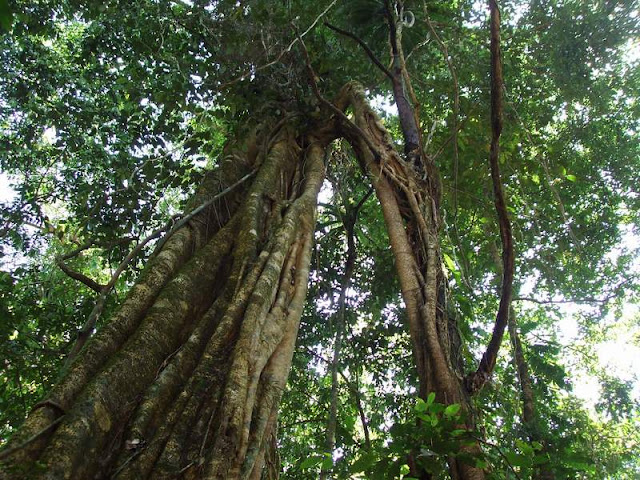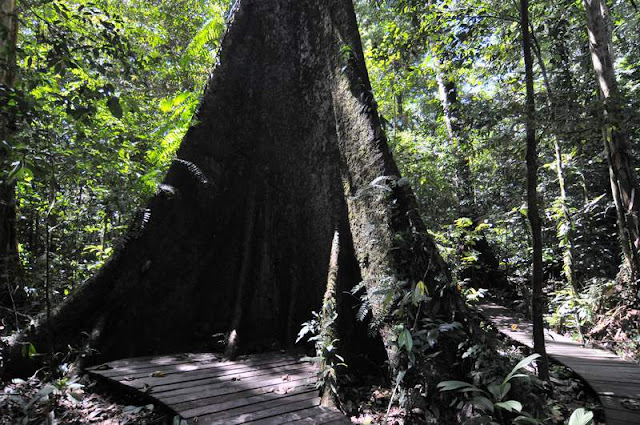Mulu National Park is located in Sarawak, Malaysia and is one of Malaysia's UNESCO World Heritage Sites.
The excellent variety of trekking, exploring, caving, adventure, flora, and fauna makes the national park one of the must-visit places in Sarawak and Malaysia.
The excellent variety of trekking, exploring, caving, adventure, flora, and fauna makes the national park one of the must-visit places in Sarawak and Malaysia.
Travelling to Mulu will be easiest done by booking ahead with the Mulu Marriott Resort and Spa or at any National Park lodgings.
I usually book my trips with my local travel agent in Kuching. I travelled by flight from Kuching to Miri and then changed my plane to Malaysia Airlines MAS Wings' smaller planes to Mulu.
The flight time from Miri to Mulu is about 30 minutes. Other places you can travel to Mulu are from Kota Kinabalu in Sabah.
There are no direct flights from Kuala Lumpur, Singapore, or Bangkok. Once you arrive at Mulu National Park, you are totally cut off from modern civilization except for the Royal Mulu Resort. (Now called the Mulu Marriott Resort)
Do not expect shopping malls or streets and shops in Mulu. There are also no taxis, buses or highways here.
Mulu National Park Review
I usually book my trips with my local travel agent in Kuching. I travelled by flight from Kuching to Miri and then changed my plane to Malaysia Airlines MAS Wings' smaller planes to Mulu.
The flight time from Miri to Mulu is about 30 minutes. Other places you can travel to Mulu are from Kota Kinabalu in Sabah.
There are no direct flights from Kuala Lumpur, Singapore, or Bangkok. Once you arrive at Mulu National Park, you are totally cut off from modern civilization except for the Royal Mulu Resort. (Now called the Mulu Marriott Resort)
Do not expect shopping malls or streets and shops in Mulu. There are also no taxis, buses or highways here.
For hardcore naturalists and adventure seekers, there is an alternative method of getting to Mulu. It is a 10-hour boat ride from Miri to Mulu.
If you are interested in this adventure, you need to check carefully, as the boat system can be unreliable due to water levels along the way.
Before you reach the park or step out, you will see one or two local restaurants and bars. These serve local Sarawakian food and drinks.
Some even serve you a cold beer and all this for a price. Remember, there are no malls or supermarkets in Mulu.
I tried several of them and found the food quite interesting compared to the resort food, which is also quite good. In the park itself, there is a local restaurant and information centre.
Getting to Mulu National Park is easy, as the Royal Mulu Resort organizes daily tours. If you are staying at the park itself, you can register for the various nature-related activities from the park headquarters.
The primary mode of transport at the park is trekking or longboats. So, you will see many longboats along the Melinau River, which serves as the main waterway for all the sightseeing.
The sites include stopovers at some of the local tribe villages, such as the Penan at Long Iman or the Berawan villages. If you stay at the Royal Mulu Resort, a shuttle bus or tuk-tuk will take you to the park and back.
General lodging/accommodation is also available at the park, and rooms are from RM20.00 to RM150.00.
The cheaper ones are dormitory-style and without air conditioning, while the more expensive ones have single rooms with an attached hot/cold shower.
Check the type of accommodation you will want. Of course, luxury living would mean staying at the Royal Mulu Resort.
 |
| Park registration information. |
At the park, all guests must pay a park entrance fee of RM10.00 (US$3.30) for each day they visit the park. (Edit, the rates have since increased from the time of writing this)
The park also hires local guides who know the park and its surroundings well. They are highly trained and speak English.
The park rangers or guides are from the ethnic tribes of Berawan, Murat, Penan, Kelabit, Lun Bawang and even Ibans.
So you have a fantastic mix of cultures there, and they are very friendly. For your added info, you can only enter the park with a park guide here.
My park guide was very friendly and informative. I enjoyed talking to him and asking him questions about his tribe and the park.
In the picture above, you see me and the park guide in deep conversation. As mentioned, they are very friendly and knowledgeable about the park and related matters. No tipping is required, but if you think they deserve it, why not?
Upon entering the park, you will come to the main walkway entrance, where there is a list of dos and donts for the park.
You should read it or ask your guide about it. Your park guide will always be with you during your exploration here.
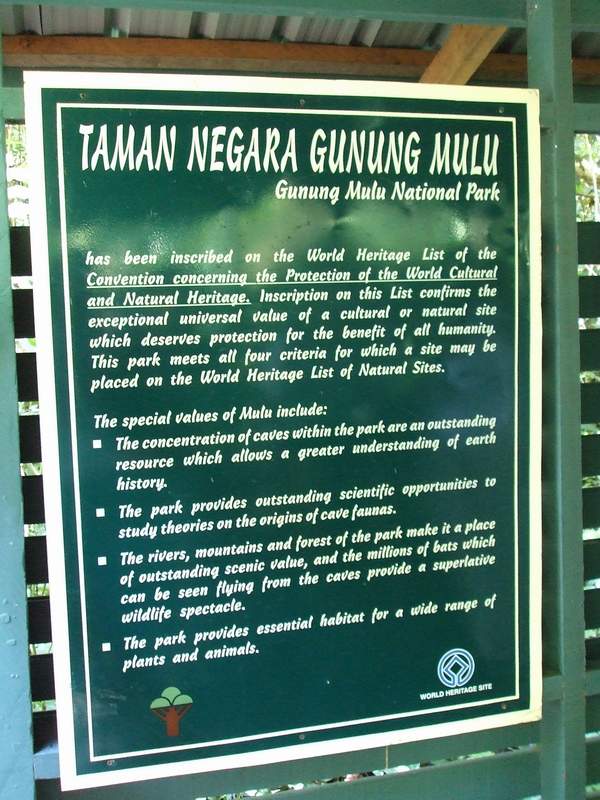 |
| The park information. |
 |
| The wooden platform curves along the trail. |
 |
| The wooden walkway at the park. |
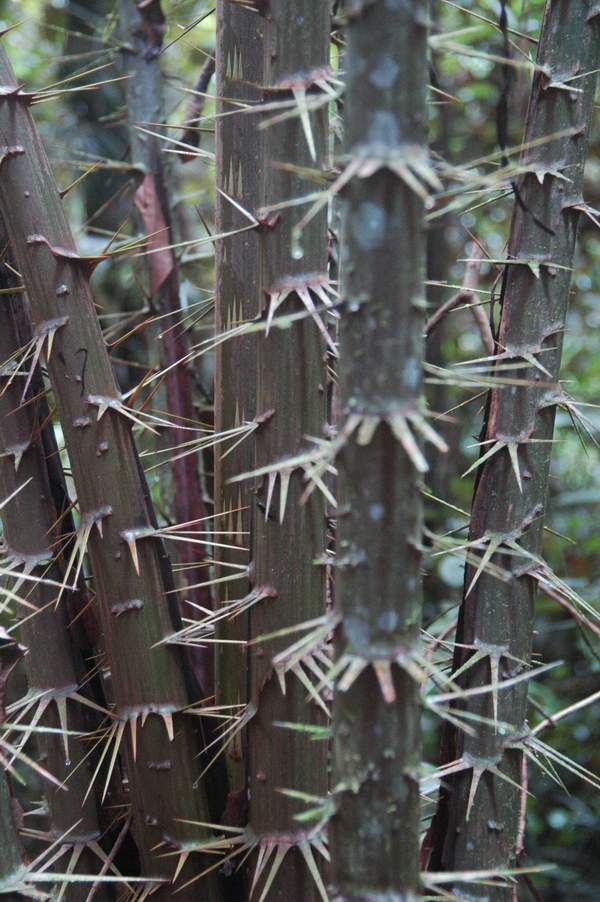 |
| Thorns on one of the trees. |
You may even spot the great Hornbills, as I did on one of my visits there. Your park guide will also inform you if he or she hears the local Rhinoceros Hornbill around the area.
You will also see lantern bugs, caterpillars, butterflies, squirrels, and other smaller fauna, and your guide will usually point them out to you.
There is the main bridge in the park where the path is divided into two. On the left, you get to explore the Mulu canopy walk, and the right takes you all the way to the Deer and Lang Cave, where the Bat Observatory is at the end.
If you are already here, take the canopy walk experience, which will be one to remember.
My guide stopped at one part of the park and showed me a little cave. According to him, bone fragments of human remains are left in there.
I am trying to figure out how true this is, as I am no expert. So, we ventured into that and saw it with our own eyes.
Usually, the park guides do not let you do that, but we were allowed to do so because we had a special park permit.
After carefully climbing into the cave, we found the bone fragments. Above is a picture of it. It could have been a human and then again an animal. So, it is still a mystery to this day, though some claim that these are indeed animal bones.
 |
| Rainforest information at the national park. |
Also, every few hundred meters, there are shelters where you can rest. It also serves as a rain shelter. Do ask your park guide about this when you are there.
 |
| Exploring the national park with my guide. |
The best part about the Mulu National Park is that you can just walk for hours and hours admiring the natural beauty of the rainforest, taking in the fresh smells and listening to the jungle sounds. Peaceful and blissful.
At the end of the main walk in the park, you will come across a couple of caves and signs indicating what cave it is. There are 2 main caves here: the Lang Cave and Deer Cave.
The Bat Observatory is also located here. The place is covered, and some locals sell drinks and snacks. Nothing heavy, chips and some chocolate bars.
The most popular area, the Bat Observatory, also has a Bat Viewing TV mounted on the wall in a metal casing. A live feed is linked to the Bat Cam in the Deer Cave. On rainy days, a replay is shown to visitors.
The picture above shows a Binuang Tree. It spans over 8 feet across the base of the tree and is over 100 feet tall, which means it is over 100 years old.
Trees like this can be found throughout the national park. Please check with your local guide about them.
 A jungle fern called Ekor Kuching is translated as Cats Tail fern.
A jungle fern called Ekor Kuching is translated as Cats Tail fern.At the end of the day, you will be led to the Bat Observatory to view the millions of bats flying out every evening for food. This is one spectacular sight you must see.
When the sun is almost down, the guides will lead you out of the park. They make sure everyone leaves before closing the park.
The park also conducts night explorations; you can inquire about this at the park headquarters. Other places of interest are the Clearwater Cave and the unique Wind Cave.
Things to bring on your exploration (in no order);
1. Poncho or small umbrella
2. Torch Light or Head Torch for the caves
3. Light snacks and mineral water
4. A mini first-aid kit
5. Bug Repellent if needed
6. A basic camera stand for the cave pictures
7. Good walking or trekking shoes
8. Toilet paper or wet wipes
9. Binoculars for bird or critter watching
Things you should not do in the park;
1. No smoking
2. No littering
3. No shouting/cussing
Update 2024: In the last ten years, I have revisited Mulu National Park several times, the last being in mid-2021. I have a special Mulu cave photography assignment there. Most of the park is still the same, except prices have increased.
Conclusion
If you have to smoke, there are places you can do so, like the huts or the Bat Observatory, but please bring your own ashtray and do not litter your buds.
I would advise keeping your addiction till you really need it, as there are many people there who came all the way to enjoy the fresh rainforest air.
I hope you enjoyed my article on Mulu National Park. If you plan a trip there, visit all the interesting places and let me know about your trip.
I would advise keeping your addiction till you really need it, as there are many people there who came all the way to enjoy the fresh rainforest air.
I hope you enjoyed my article on Mulu National Park. If you plan a trip there, visit all the interesting places and let me know about your trip.












